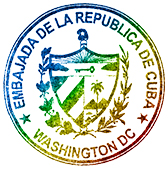The original Cuban culture and natural history tour
Western Cuba culture tour

Western Cuba culture tour overview

Cuba Explorer’s Western Cuba culture tour promises you, as with thousands before, comfortable, safe, fun cultural and nature travel. It is fully escorted. From the minute you arrive in Havana until you return home, you are in the conscientious care of a fulltime multilingual Cuban tour guide, and professional bus chauffeur. Our office is in Havana and operates 24/7 to serve your every need.
From the secret lives of Cubans and their idiosyncratic society to sub rosa environs of endemic flora and fauna, you experience the grand island of the Caribbean just like the first explorers of the New World.
Now, American adventures can make surreptitious discoveries, so close to home, and affordably. No need to journey to the far reaches of the planet to stumble upon one of the most mysterious social experiments and untainted ecologies imaginable.
Familiar, and yet so fresh. Cuba is the last vast unspoiled region in our hemisphere. You’ll glimpse what we’ve lost at home, but not forgotten. At the same time, you’ll meet Cubans on the cutting edge of art and culture. Our island team will share with you planet-friendly innovations and people-first advances of universal free healthcare and education. The WWF (World Wildlife Federation) describes Cuba as the most environmentally sustainable country in the world. You’ll learn how Cubans do it.
Western Cuba culture tour map

Day 1 • Saturday • Bienvenido a La Habana
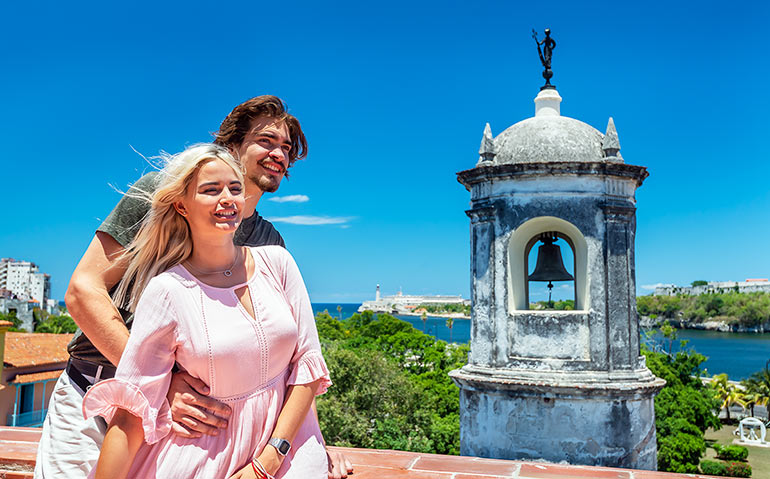
- Arrive at Havana’s José Martí International Airport (HAV).
- En route to your boutique accommodation, savor the sights and sounds of one of the New World's oldest and most stunning cities.
- At your lodging, enjoy a welcome cocktail, freshen up, and get comfortable.
- Group arrival dinner with your guide and tourmates at your accommodations.
- Evening entertainment options: Groove to live jazz, relax in a lounge, or revel in a dicey dance show – all within walking distance of your lodging.
Day 2 • Sunday • Getting to know Old Havana and its people
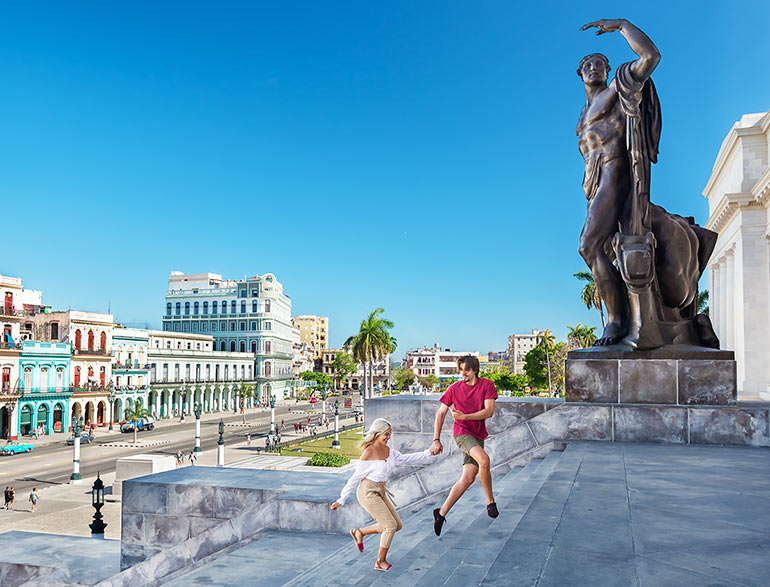
- Greet the day with a tasty breakfast at your boutique accommodation.
- Fall in love with Old Havana. “In terms of beauty, only Venice and Paris surpassed Havana,” penned Ernest Hemingway. He was alluding to Havana’s incredible architecture, arts, and, of course, the joie de vivre of its engaging people. Old Havana’s four ancient plazas are full of color and personality, with a mix of palatial buildings, monuments, museums, galleries, churches, lively entertainment, restaurants, and bars. Together, the four plazas of Old Havana contain the most extensive collection of Spanish colonial-era architecture in Latin America. A UNESCO World Heritage Site, restoration and care of Old Havana’s majestic wonders is assigned to the Office of the Historian of Havana – the sponsor of Cuba Explorer.
- You’ll witness Cathedral Square, considered the most beautiful colonial plaza in Latin America, and a symbol of Havana. Its centerpiece is Catedral de San Cristóbal de La Habana, erected in 1748 by the Jesuit order. The bones of Christopher Columbus were kept in the church until 1898.
- Next, we tour Plaza de Armas [Square of Arms], an ancient military parade ground for Spanish soldiers, surrounded by such impressive buildings as Palacio de los Capitanes Generales, the former seat of colonial government. The stately edifice, dating from 1776, houses the Museum of the City.
- We continue onto San Francisco Square, one of the oldest in the historical quarter, and christened after the magnificent Iglesia y Monasterio de San Francisco de Asís. Its construction began in 1580. It features a 138-foot bell tower and contains the remains of Havana’s past elites.
- Finally, we visit Plaza Vieja, laid out in 1559, for public processions, bullfights, and executions. Later it became home to Havana’s colonial elites and is dominated by their opulent aristocratic 17th-century mansions. Today it is a hub of shops, cafés, beer gardens, music, and dance.
- Art attack. Examine Cuba’s greatest visual masterpieces spanning three centuries at Havana’s museum of modern art – Palacio de Bellas Artes. Sections are devoted to landscape, religious subjects, and narrative scenes of Cuban life spanning 300 years. Together the exhibits account for the richness of the island’s Spanish, French, Chinese, African, and Aboriginal cultural roots. Notable works include those of René Portocarrero and Wilfredo Lam. You’ll meet and chat with museum staff and perhaps local artists.
- Group welcome lunch is served at the private restaurant Mojito-Mojito. Ideally situated in Plaza Vieja, its friendly staff, quaint atmosphere, and delicious food rank it tops on TripAdvisor. The restaurant’s slogan is, “A single mojito is not enough.” We agree.
- Get ready for an American vintage car tour of Havana. Hail back to picture postcard days of the 1950s. You will tool the most important sites of Havana in classic US automobiles lovingly restored and maintained by their owners. This an excellent time to reminisce about Cuba’s pre-revolution era and subsequent developments with your guide.
- Return to your boutique accommodation to freshen up.
- Dining highlight. A hidden gastronomical gem. Group dinner at Paladar Café Laurent in Havana’s Vedado neighborhood. Consistent great reviews, spectacular city vistas, fine dining, and excellent service
- Meet the musicians of the renowned Buena Vista Social Club and enjoy a performance of their world-renowned pre-Revolution symphonic s that have tilted the world music scene since 1996.
Day 3 • Monday • The natural splendor of rural Cuba
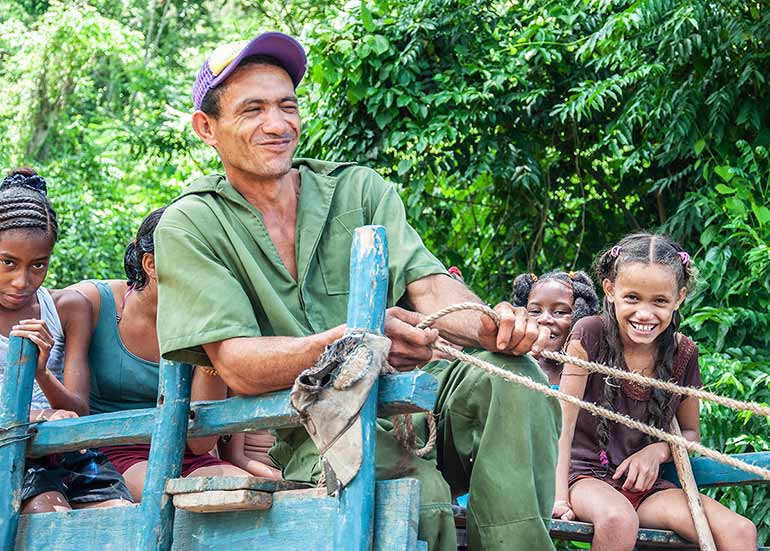
- Greet the day with a tasty breakfast at your boutique accommodation.
- Day excursion to the amazing Las Terrazas just one hour to the west of Havana in Artemisa province. Once mired in poverty and wholly deforested after centuries of charcoal production for coffee processing and cooking, Las Terrazas today is a vibrant, self-sustaining eco-community.
- On arrival to the rural village Rancho Curujey, you’ll enjoy a welcome cocktail while learning about the community’s successes in reforestation, historical preservation, environmental balance, and a good life. Later we’ll walk the incredible ruins of a French Coffee Plantation built in 1801 and worked by African slaves.
- Enjoy lunch at an open-air restaurant specializing in traditional country cuisine – La Casa del Campesino – ever popular with tour participants and locals alike. The eatery is located on the shore of the Río San Juan, making the surroundings a lush tropical paradise. Your local guide will explain the restoration of the jungles and forests of Las Terrazas and learn the principles and practices that support the region.
- Return to your boutique accommodations to freshen up.
- Dinner is not included in tour cost. Tonight is an occasion to sample Havana’s stellar private eateries and taste the diversity of the island’s distinctive cuisines. We’ll provide suggestions for restaurants most popular with Cubans and our travelers.
- Time to explore Havana’s vibrant nightlife and make new Cuban friends. We’ll keep you posted on evening entertainment options.
Day 4 • Tuesday • Urban agriculture, Hemingway house

- Greet the day with a tasty breakfast at your boutique accommodation.
- We’ll visit the UBPC Vivero Organopónico Alamar, 9 miles east of Havana. It’s one of the most successful urban organic farms in Cuba raising ornamental plants, medicinal herbs, and sprouting millions of seedlings for neighboring private and collective farms. Established in the early 1990s by a dozen people, the Alamar cooperative now has over 400 members who together supply a vast range of healthy, organic vegetables to nearby communities.
- We have lunch at Ajiaco paladar, considered one of the best private eateries in the country. Located in the romantic coastal fishing village of Cojímar (the setting for Ernest Hemingway’s “The Old Man and the Sea”), Ajiaco paladar [restaurant] is amongst the top-rated eateries on TripAdvisor. It’s noted for its fantastic service, atmosphere, and food. Organic fresh produce and other ingredients come from Vivero Organopónico Alamar.
- Hemingway’s haunt. We’re off to visit Finca Vigía [Lookout Farm], where North America’s literary titan Ernest Hemingway spent twenty-one of his most productive years penning building blocks of English literature. Claimed by both the United States and Cuba as their son, it was Hemingway himself who declared the island his true home. Hemingway’s house remains just as it was when he lived there. You’ll see his personal effects, thousands of books and photographs, and animal trophies, bagged on his numerous African safaris.
- Return to your boutique accommodations to freshen up.
- Dinner not included in tour cost. Tonight is an occasion to sample Havana’s stellar private eateries and taste the diversity of the island’s distinctive cuisines. We’ll provide suggestions for restaurants most popular with Cubans and our travelers.
- Time to explore Havana’s vibrant nightlife and make new Cuban friends. We’ll keep you posted on evening entertainment options.
Day 5 • Wednesday • Historic Cienfuegos + Trinidad de Cuba
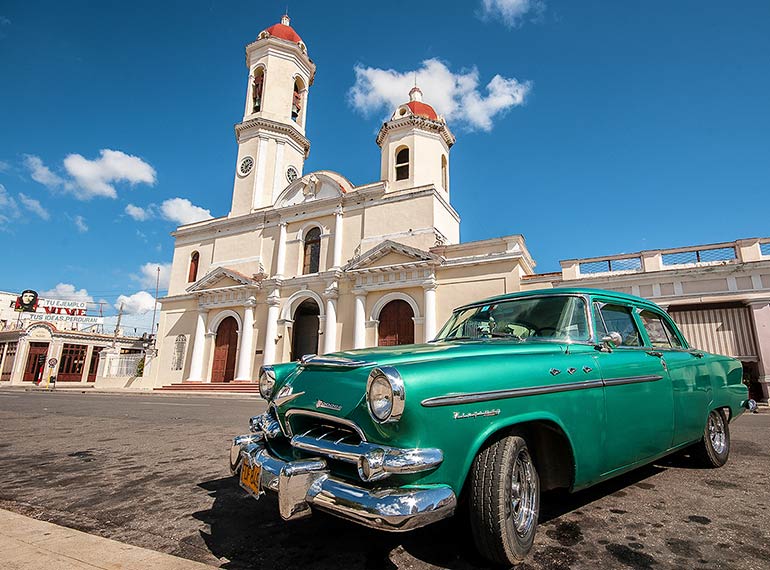
- Greet the day with a tasty breakfast at your boutique accommodation.
- Enroute to Trinidad, we’ll visit beautiful Cienfuegos settled by French immigrants in 1819. The city, known as the “Pearl of the South,” is a UNESCO Cultural Heritage of Humanity site for its wealth of stunning French Caribbean-style buildings. You’ll walk the mansion studded central Plaza Martí, the location of the original colony. We’ll visit a neoclassical Catholic Cathedral built with donations from wealthy slave-owning families from Bordeaux France, New Orleans, and Philadelphia. Inside the Cathedral an intricately rendered stained glass mural of the Twelve Apostles from Paris will awe you. The original machinery of the Cathedral’s tower clock also crafted in France and keeps on ticking to this day. Naturally, Cienfuegos boasts a replica of the Arc de Triomphe in its central plaza.
- Lunch at the family restaurant Villa Lagarto set on the water’s edge overlooking the bay of Cienfuegos. Enjoy sea breezes and great views during this authentic Cuban dining experience.
- Onward to the historic city of Trinidad de Cuba. Check-in to your hotel, enjoy a welcome cocktail, freshen up, and get comfortable.
- Trinidad welcome dinner at El Bolo Vista Gourmet private restaurant. Perched on an ancient terrace above Trinidad’s red-tiled rooftops you’ll gape over breathtaking views of the city.
- This evening you might choose to visit Casa de la Música or Casa de la Trova – both great music venues, with opportunities to chat and dance with Cubans and your tour companions.
Day 6 • Thursday • Mountaintop excursion and nature romp
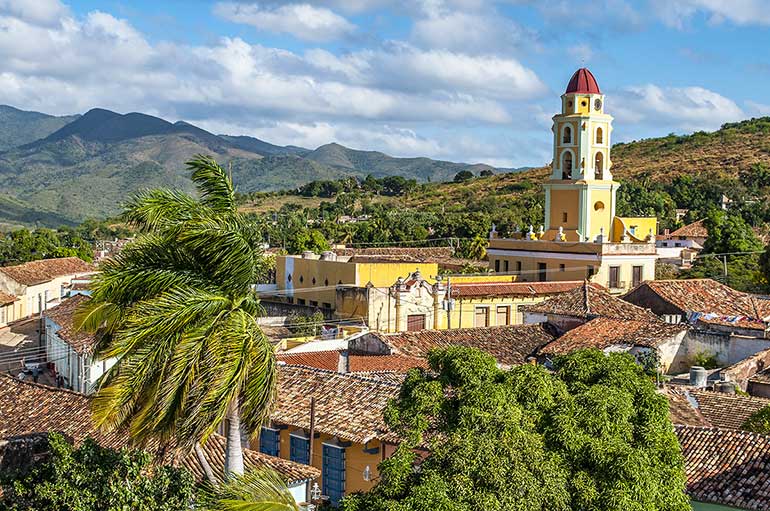
- Greet the day with a tasty breakfast at your boutique accommodation.
- This morning we board Soviet Army trucks to climb the peaks of Topes de Collantes in the Escambray Mountains. The Escambrays comprise the island’s second-highest range, reaching to 3,700 feet atop Pico San Juan. The mountains harbor small villages and are a pure delight for birders and naturalists alike. Dramatic slopes are swathed in Caribbean pines, ancient tree ferns, bamboo, and eucalyptus. It’s the perfect environment to spot the Cuban parakeet, Fernandina’s flicker, the Cuban parrot, the Cuban pygmy owl (about the size of a robin), and the Gundlach’s hawk.
- Upon arrival at Hacienda Codina, an old Spanish coffee plantation, we’ll enjoy a traditional Cuban lunch. Next, we’ll take a walking tour of the area to admire the beauty of the surrounding landscape and the animals and plants it hosts. After some exploration by foot, we’ll return to Trinidad.
- We’ll stop at a mirador [lookout] high above the Valle de los Ingenios [Sugar Mill Valley], also a UNESCO World Heritage Site. Sugar was king in Cuba for centuries. Spaniards introduced the sweetener in 1512. It enriched conquistadors and nobles returning more wealth than all the gold and silver extracted from Peru and Chile. It helped make Cuba the wealthiest nation in Latin America. Sugar’s stellar profits allowed select families to build incredible mansions and monuments. The lust for sugar was the engine of the African slave trade, redefining ownership of human beings along color lines for the first time in history. Today sugar plays a greatly diminished role in the island economy.
- Dinner not included in tour cost. Tonight is an occasion to sample Trinidad’s stellar private eateries and taste the diversity of the island’s distinctive cuisines. We’ll provide suggestions for restaurants most popular with Cubans and our travelers.
- This evening you might choose to visit Casa de la Música or Casa de la Trova – both great music venues, with opportunities to chat and dance with Cubans and your tour companions.
Day 7 • Friday • UNESCO World Heritage Sites in Trinidad
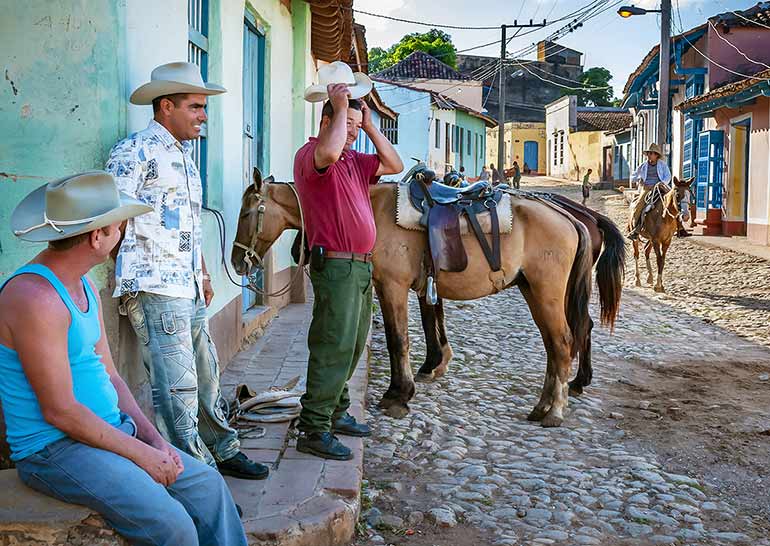
- Greet the day with a tasty breakfast at your boutique accommodation.
- We’ll explore on foot the historic central plaza of Trinidad de Cuba. Its buildings, some dating from the mid-1500s, are the most pristine and unflawed on the island. Road access to Trinidad happened after 1959, before, Trinidad was only accessible by ship. The village was established in 1514 on orders of the conquistador Diego Velázquez de Cuéllar who traveled to Cuba with Columbus in 1493. From Trinidad de Cuba, conquistador Hernán Cortés launched his attack on the Aztec Empire, toppling its capital of Tenochtitlan [Mexico City]. Tenochtitlan was the world’s most populous, opulent, and hygienic metropolis at that time.
- Visit Plaza Mayor, Museum of Architecture, Museum of the Romantic Era, the central town parish and other amazing sites, some dating back centuries. We will wander the streets of Trinidad’s historical center and examine the oldest architecture in the Americas with local Cubans. You’ll immediately see why UNESCO declared the city a World Heritage Site in 1988.
- Trinidad is well known for its pottery makers. We’ll visit a ceramics workshop operated over five generations by Santander family members. We’ll meet the artisans who works adorn Trinidad and learn centuries-old craft secrets.
- Lunch at Guitarra Mía paladar. It’s popular with Cubans and foreigners alike for its great food, excellent service, beautiful setting, and atmosphere, with a focus on service and quality. Look forward to something special.
- Return to Havana. Check-in to your hotel, enjoy a welcome cocktail, freshen up, and get comfortable.
- Farewell group dinner. In the heart of Vedado, set in an elegant mansion, is one of Havana’s best restaurants, El Atelier. Its menu changes daily at the chef’s discretion based on the availability of fresh produce. Aside from El Atelier’s selection of to-die-for dishes, and excellent service, the atmosphere is worth the visit if only for a cocktail and the view. El Atelier has been among the city’s best eateries for years with Cubans and foreign guests. President Obama, First Lady Michelle, and daughters Malia and Sasha dined at El Atelier in 2016.
- Evening entertainment options: Groove to live jazz, relax in a lounge, or explore the sounds of the city – all within walking distance of your lodging.
Day 8 • Saturday • Say goodbye to Cuba. For now
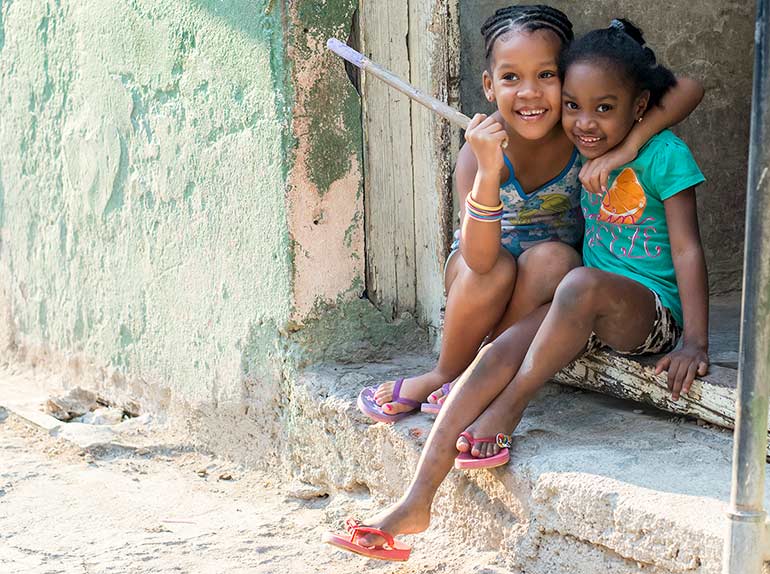
- Greet the day with a tasty breakfast at your boutique accommodation.
- Transfer to José Martí International Airport (HAV) for flights home.
- We’ll miss you and hope you will return soon. In Cuba, we say, “A true friend remembers the song in your heart when you have forgotten the lyrics.”
- Want to extend your Cuba stay? We'll gladly assist. Just ask us!
Reserve your tour now. Take 48 hours to shop and compare.
Included in Cuba tour package cost
- Cuban Tourist Visa and delivery, a $100 plus value
- Certificate of Legal Cuba Travel identifying OFAC travel license category
- Small group size: limited to twelve or fewer guests
- Knowledgeable, fun, attentive Cuban guides from arrival to departure
- Flexible tour payment options, you decide payment schedule
- Quality accommodations as listed in this itinerary
- Air-conditioned transport, professional driver, and bottled water daily
- Arrival and departure transfers on tour start and end days
- All meals and activities in itinerary unless noted as “optional” or “suggested”
- Emergency telephone and internet access from Cuba to America
- Cash advances for participants caught short of funds in Cuba
- Ongoing support from our US and Cuban staff before, during, and after travel
- Participants become Club Cubano alumni and receive future tour discounts
Tasty meals included each tour day
| 1 | 2 | 3 | 4 | 5 | 6 | 7 | 8 |
|---|
Not included
- Air flights – List of commercial flights to Cuba
- Gratuities for Cuban tour guide and bus driver – Review tipping guidelines
- Trip interruption insurance is strongly advised – See options and rates

Weekend in Havana

Havana extravaganza
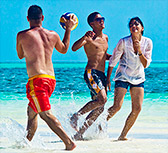
Old Havana and the sea

Wild Cuba adventure
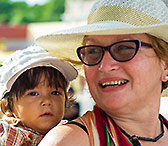
Create a private Cuba tour

Study abroad in Cuba
Read what Cuba travelers say
